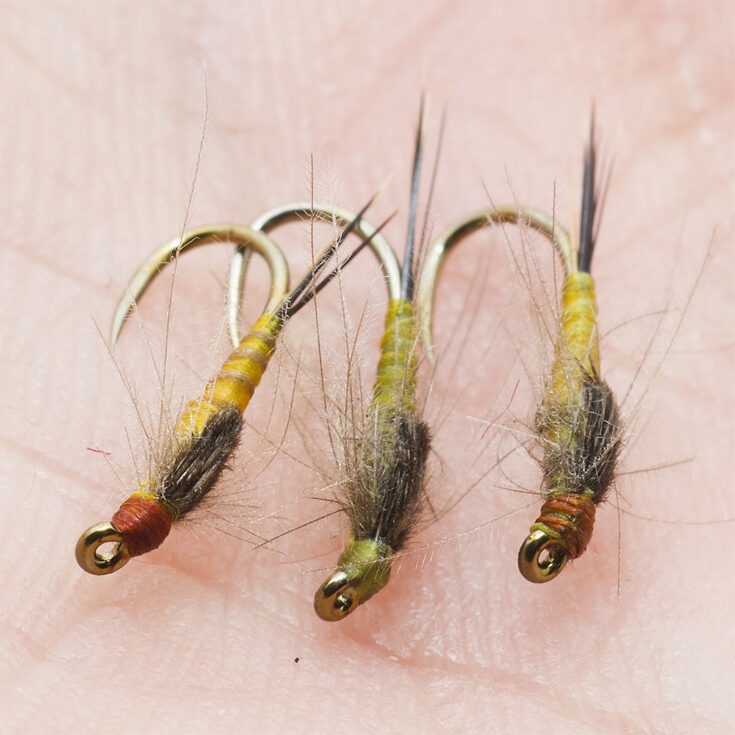
Baetis is one of the most important aquatic insect genera for trout and grayling fishing. Known commonly as Blue Winged Olives (BWOs), these small mayflies are present almost year-round, with hatches peaking in spring and fall. Their abundance and regular activity make them a critical food source for fish in both rivers and streams.
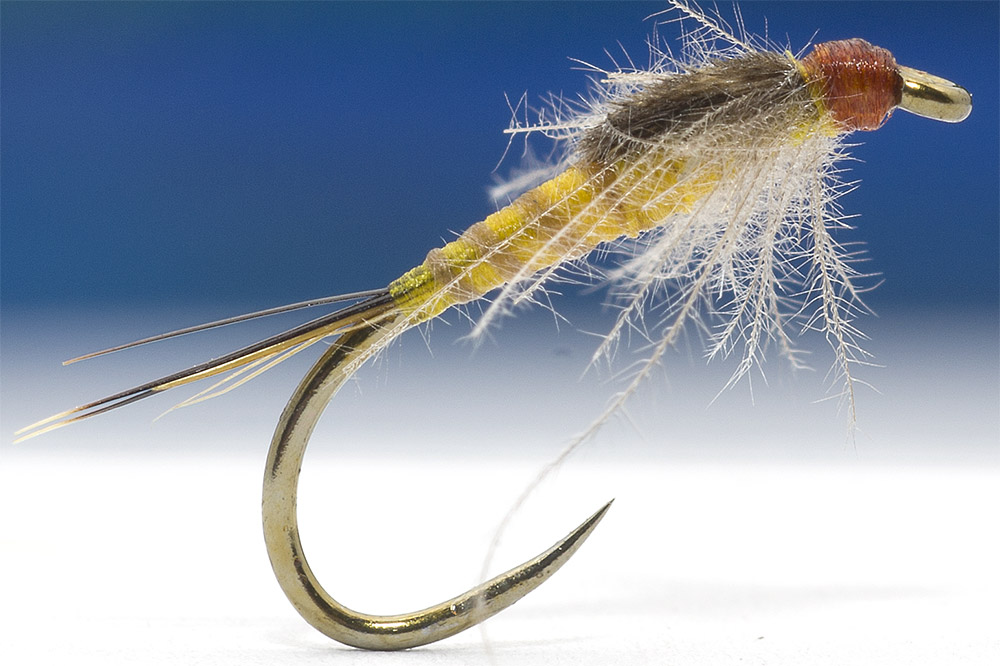
Tying keys points:
- Slim body: Baetis nymphs are slender insects, not bulky. Use thread instead dubbing.
- Small size: Tie them small, usually size 16 to 20.-Baetis are naturally small!
- Color Accuracy: Stick with natural shades: olive, olive-brown, dark grey, or dark green.
- Natural Movement: Use soft materials like CDC fibers, partridge, or soft feathers, avoid stiff and rigid patterns—movement triggers strikes.
- Realistic Segmentation: A thin wire or fine tinsel ribbing gives a subtle segmented look, making the fly look more natural.
- Weight Wisely: Lightly weighted flies with a thin tungsten wire underbody sink at a natural rate—important for imitating Baetis that drift freely before hatching. Or no weight at all (for emerging nymphs)
Because Baetis nymphs are agile swimmers, darting around rocks and vegetation, a simple fly is far more effective—tying Baetis patterns doesn’t require complicated techniques; a slim body, a small wingcase, and a fine tail are all you need to create a nymph that trout and grayling will hunt.
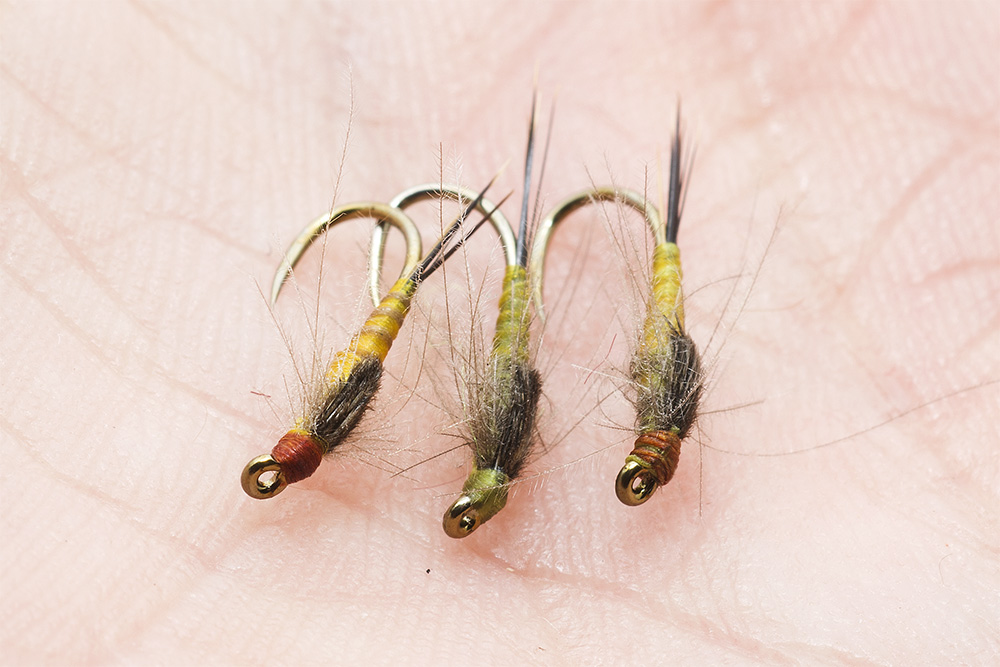
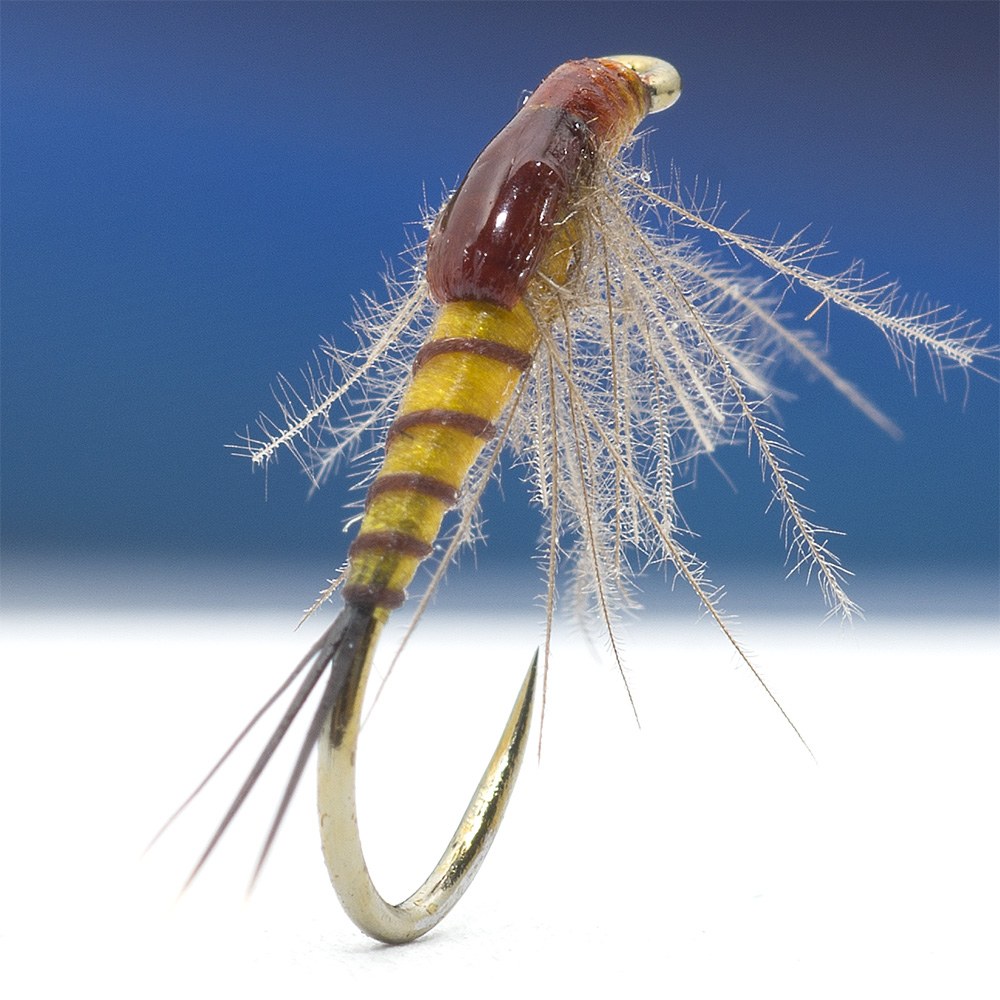
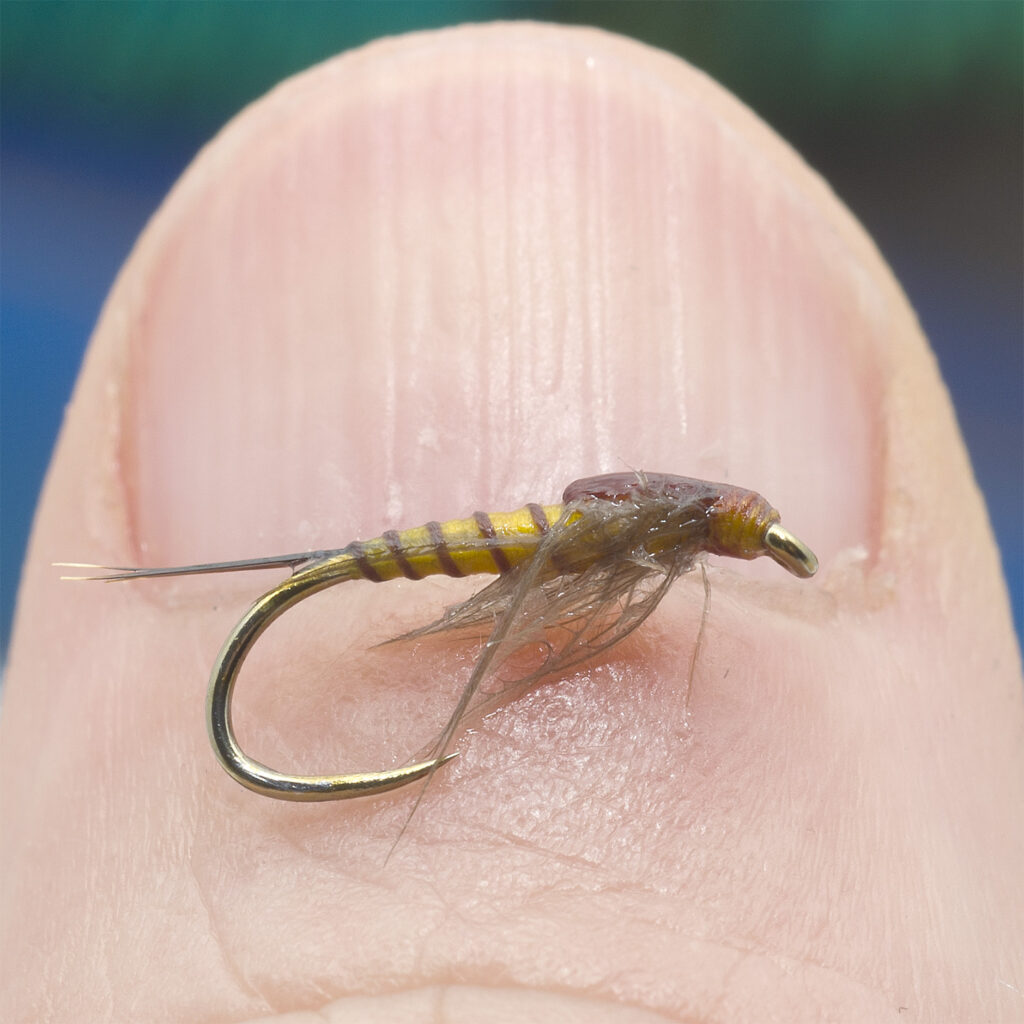
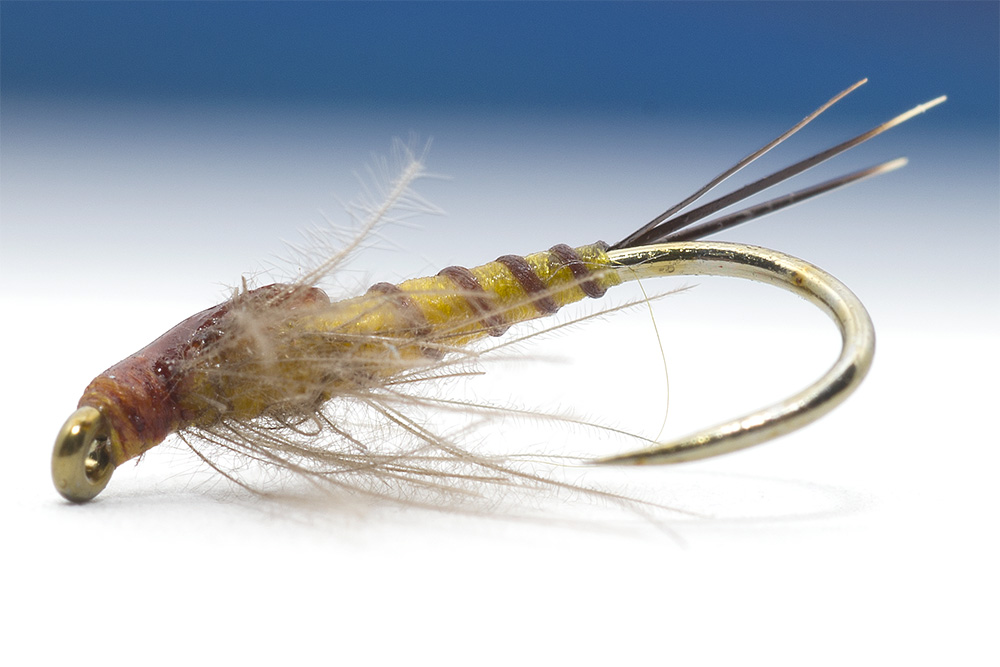
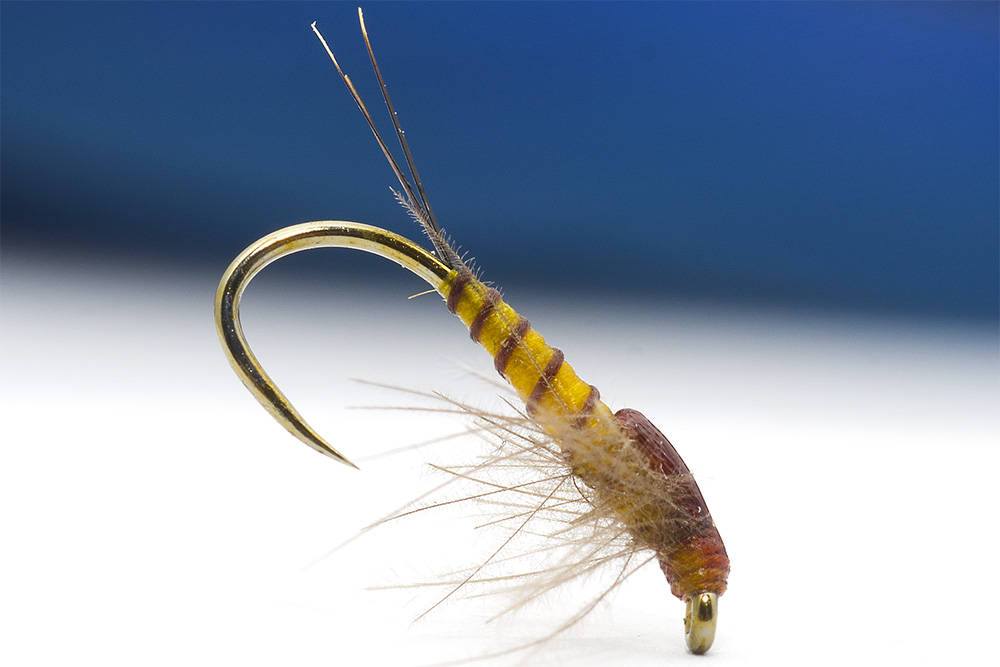
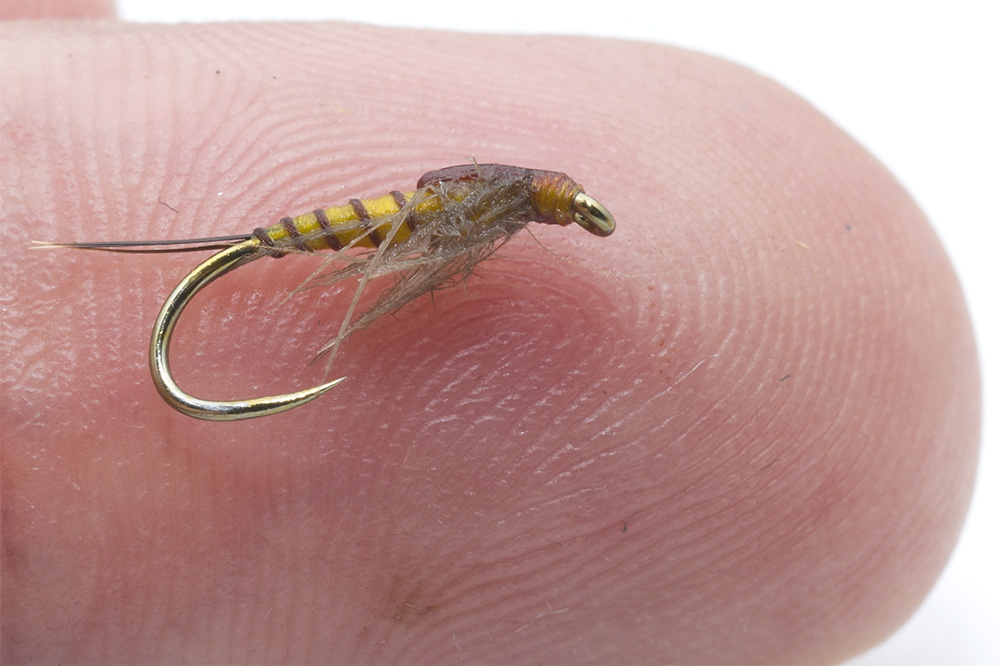

Leave a Reply